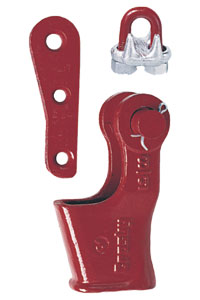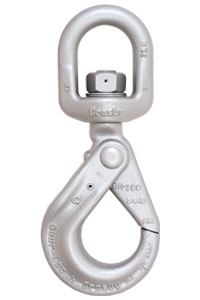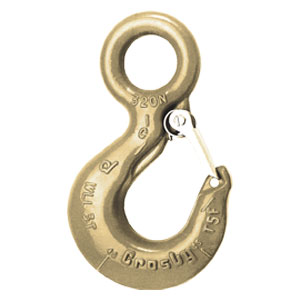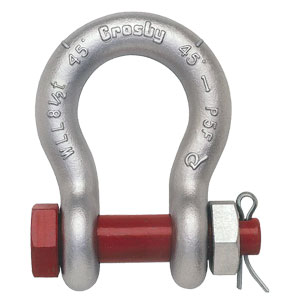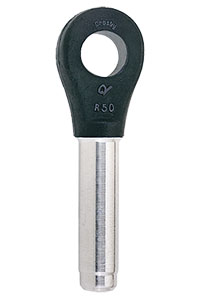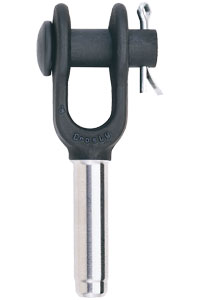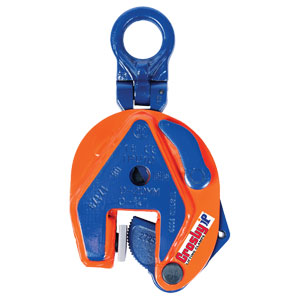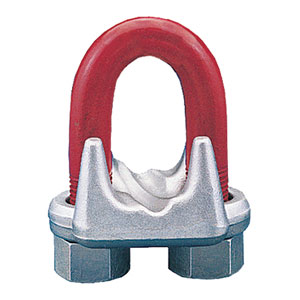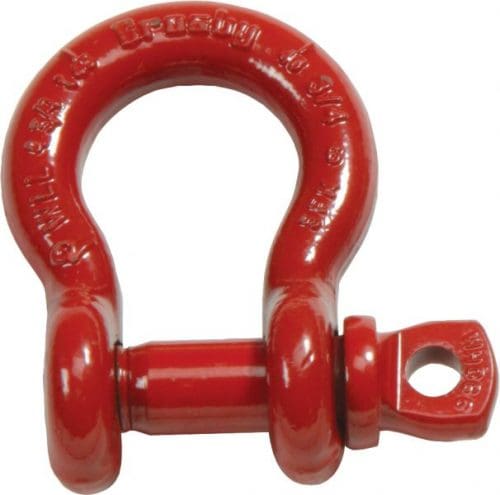What brand names are included in the Crosby product family?
The Crosby Group has the most highly recognized brand names in the industry. Each has stood for quality for many years. Because of that ongoing “uncompromising” commitment to quality, these products have been the choice of several generations of end users. Crosby® (Formerly Crosby-Laughlin, Founded 1836) Shackles, hooks, turnbuckles, links, rings, eye bolts and wire rope clips Lebus® (Founded 1941) Load binders, snatch blocks and tail chains McKissick® (Founded 1925) Crane blocks, snatch blocks, construction blocks and sheaves National (Founded 1954) “Cold-Tuff” Swage sleeves, swage buttons, swage sockets, Swaging machines and dies Western® (Founded 1883) Snatch blocks, tackle blocks, marine blocks and manila rope blocks Bullard® (Founded in 1952) Golden Gate Hooks for use with wire rope, chain and hoists. CrosbyIP (Founded in 1974) Vertical lifting clamps, horizontal lifting clamps, beam clamps, drum clamps and other specialty clamps. These Time-Tested brand names continue to be the recognized market leaders in the industries where they are utilized.
Industrial Wire Rope offers all the products Crosby has to offer. Call 513-941-2443 or email us and receive your quote today.
Shop Crosby Products
Why Choose Crosby?
Wire Rope End Fittings
The proper performance of forged clips depends on proper manufacturing practices that include good forging techniques and accurate machining. Forged clips provide a greater rope bearing surface and more consistent strength than malleable cast iron clips. Fist Grip clips provide a saddle for both the “live” and the “dead” end. Fewer forged clips are required for each termination than with malleable cast iron clips. Forged clips reduce the possibility of hidden defects that are sometimes present in malleable cast iron clips. Malleable cast iron clips should only be used in non-critical applications. ASME, OSHA, and ASTM recommend only forged clips for critical applications.
Crosby provides forged “Red” U-Bolt Clips and forged Fist Grip clips which meet or exceed Federal Specification Number FF-C-450E and are considered the industry standard.
The proper application of forged clips required that that correct type, size, number, and installation instructions be used. Availability of a full range of sizes of forged U-bolt clips and forged Fist Grip clips are essential for design flexibility.
Only Crosby provides forged “Red” U-Bolt Clips from 1-1/8″ to 3-1/2″ and forged Fist Grip clips from 3/16″ to 1-1/2″.*
*The 3-1/2″ base is a steel casting.
The clip’s size, manufacturer’s logo, and a traceability code should be clearly embossed in the forging of the clip. These three elements are essential in developing total confidence in the product.
Crosby clearly embossed its logo, the size, and the Product Identification Code (PIC) into all Crosby “Red” U-Bolt Clip bases and Fist Grip clips. Crosby’s traceability system is actively used throughout the manufacturing of forged clips. The material analysis for each heat of steel is verified within our own laboratory.
Detailed application information will assist you in the proper installation of wire rope clips. This information is most effective when provided at the point of application, as well as in supporting brochures and engineering information. The manufacturer must provide this specific information. Generic information will not provide all the needed application instructions. A formal application and warning system that attracts the attention of the user, clearly informs the user of the factors involved in the task, and informs the user with the proper application procedures as needed.
Crosby provides detailed application and warning information for all forged clips. Each clip is individually bagged or tagged with the application and warning information. Testing and evaluation of special applications can be performed upon special request.
Shackles
The theoretical reserve capability of carbon shackles should be as a minimum 5 to 1, and alloy shackles a minimum of 5 to 1*. Known as the DESIGN FACTOR, it is usually computed by dividing the catalog ultimate load by the working load limit. The ultimate load is the average load of force at which the product fails or no longer supports the load. The working load limit is the maximum mass or force which the product is authorized to support in general service. The design factor is generally expressed as a rating such as 5 to 1. Also important to the design of shackles is the selection of proper stell to support fatigue, ductility and impact properties.
Crosby carbon shackles have the highest design factor (6 to 1) in the industry. All of Crosby’s design factors are documented. Crosby purchases only special bar forging quality steel with cleanliness and guaranteed harden ability. All material chemistry is independently verified prior to manufacturing. The design of Crosby shackles assures that strength, ductility and fatigue properties are met.
The proper performance of premium shackles depends on good manufacturing techniques that include proper forging and accurate machining. Closed die forging of shackles assures clear lettering, superior grain flow, and consistent dimensional accuracy. A closed die forged bow allows for an increased cross section that, when couples with quench and tempering, enhances strength and ductility. Closed die bow forgings combined with close tolerance pin holes assures good fatigue life. Close pin-to-hole tolerance has been proven to be critical for good fatigue life, particularly with screw pin shackles.
Each shackle is closed die forged. Closed die forging produces consistent dimensions. A closed die forged bow allows for an increased cross section that, when couples with quench and tempering, enhances strength and ductility. Close tolerance holes and concentric pins with good surface finishes are provided by Crosby and are proven to provide improved fatigue life in actual use. Crobsy shackles are fatigue rated as well as load rated. Close pin to hole tolerance has been proven to be critical for good fatigue life, particularly with screw pin shackles.
Quench and tempering assures the uniformity of performance and maximizes the properties of the steel. This means that each shackles meets its rated strength and has required ductility, toughness, impact and fatigue properties. The requirements of your job demand this reliability and consistency. This quench and tempering process develops a tough material that reduces the risk of brittle, catastrophic failure. The shackle bow will deform if overloading occurs, giving warning before ultimate failure.
All Crosby shackle bows and pins are quenched and tempered, which enhances their performance under cold temperatures and adverse field conditions. Crosby’s Quenched and Tempered carbon shackles are recommended for all critical applications including overhead lifting. Alloy shackles are recommended when specific dimensional requirements dictate a size that require higher working load limits. Crosby’s Quenched and Tempered shackles provide the tensile strength, ductility, impact and fatigue properties that are essential if they are to perform time after time in adverse conditions. These properties assure that the inspection criteria set forth bu ANSI will effectively monitor the ability of the shackles to continue in service.
The proper application of shackles requires that the correct type of size and shackle be used. The shackle’s working load limit, its size, a traceability code and the manufacturer’s name should be clearly and boldly marked in the bow. Traceability of the material chemistry and properties is essential for total confidence in the product. Material chemistry should be independently verified prior to manufacturing.
Crosby forges “Crosby” or “CG”, the Working Load Limit, and the Product Identification Code (PIC) into each bow and “Crosby” or “CG”, and the PIC into each pin of its full line of screw pin, round pin, and bolt type anchor and chain shackles. Seminars conducted by Crosby provide training on the proper use of shackles. Crosby training packets, supplied free to attendees of Crosby seminars, provide training materials needed to explain the proper use of shackles.
Frequently Asked Questions
Clips
Yes, Crosby wire rope clips are forged.
Yes. The cradle provided and both the Fist Grips and “Red” U-bolt clips meet or exceed Federal Specification Number FF-C-450E.
Yes. Crosby provides a full range of forged wire rope clips 1/8” to 3-1/2”.
Wire Rope clips should always have the manufacturers name and size clearly marked.
Crosby has the Product Identification Code (PIC) on all wire rope clips.
Yes, each package has warning label information included.
Shackles
A minimum of 5 to 1. Crosby Shackles Have a design Factor of 6 to 1. The design factor is expressed as a ratio. Also important to the design of shackles is the selection of proper steel to support fatigue, ductility, and impact properties.
No. Crosby always assures that strength, ductility, and fatigue properties are met.
Close tolerance holes and concentric pins with good surface finishes are provided by Crosby and are proven to improve fatigue life in actual use.
All Crosby Bows and pins are quenched and tempered, which enhances their performance under cold temperatures and adverse field conditions.
Crosby’s carbon shackles are recommended for all critical applications, including overhead lifting.
Heat treated shackles develop a tough material that reduces the risk of brittle, catastrophic failure.
Yes. Crosby shackles have a PIC code and are clearly marked with the Crosby name or “CG”.
Yes, Crosby always verifies the material on a regular basis.
Crosby and Industrial Wire Rope can provide training on the proper use of shackles.

